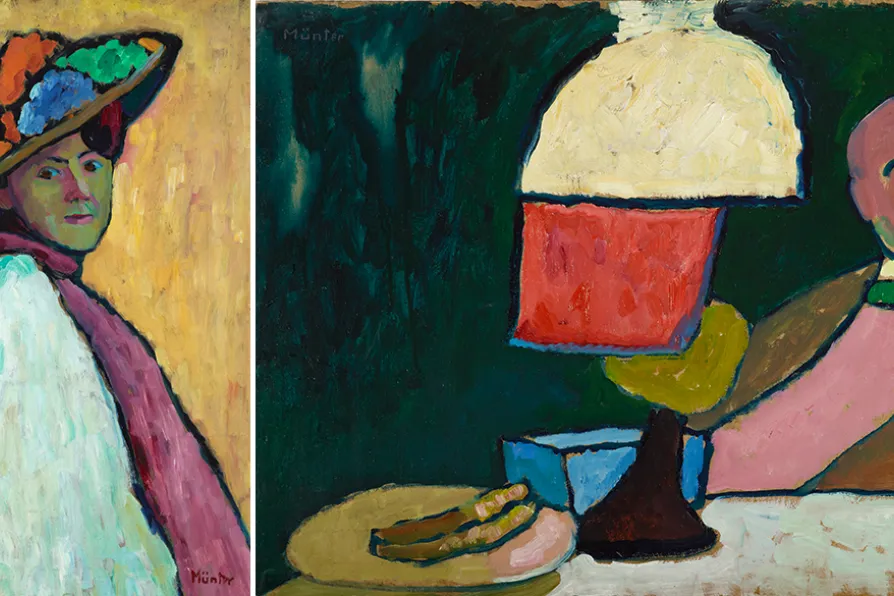MARIA DUARTE picks the best and worst of a crowded year of films
How it felt to be free
CHRISTINE LINDEY guides us through the vivid expressionism of a significant but apolitical group of pre WWI artists in Germany

 Gabriele Münter, Portrait of Marianne von Werefkin, 1909; Listening (Portrait of Jawlensky), 1909
[Lenbachhaus Munich © DACS 2024;]
Gabriele Münter, Portrait of Marianne von Werefkin, 1909; Listening (Portrait of Jawlensky), 1909
[Lenbachhaus Munich © DACS 2024;]
Expressionists: Kandinsky, Munter and the Blue Rider
Tate Gallery, London
In 1912 the Blue Rider artist Franz Marc wrote: “We are today seeking behind the veil of nature’s outward appearance hidden things which seem to us more important than the discoveries of the Impressionists... Art always has been and is in its very essence the boldest departure from nature and ‘naturalness’. It is the bridge into the spirit world.” No wonder that their works baffled most of their public which was used to the 19th century’s highly realistic depictions of the visible world.
Similar stories

This is poetry in paint, spectacular but never spectacle for its own sake, writes JAN WOOLF

ANDY HEDGECOCK relishes two exhibitions that blur the boundaries between art and community engagement

JAN WOOLF wallows in the historical mulch of post WW2 West Germany, and the resistant, challenging sense made of it by Anselm Kiefer

The Morning Star sorts the good eggs from the rotten scoundrels of the year










